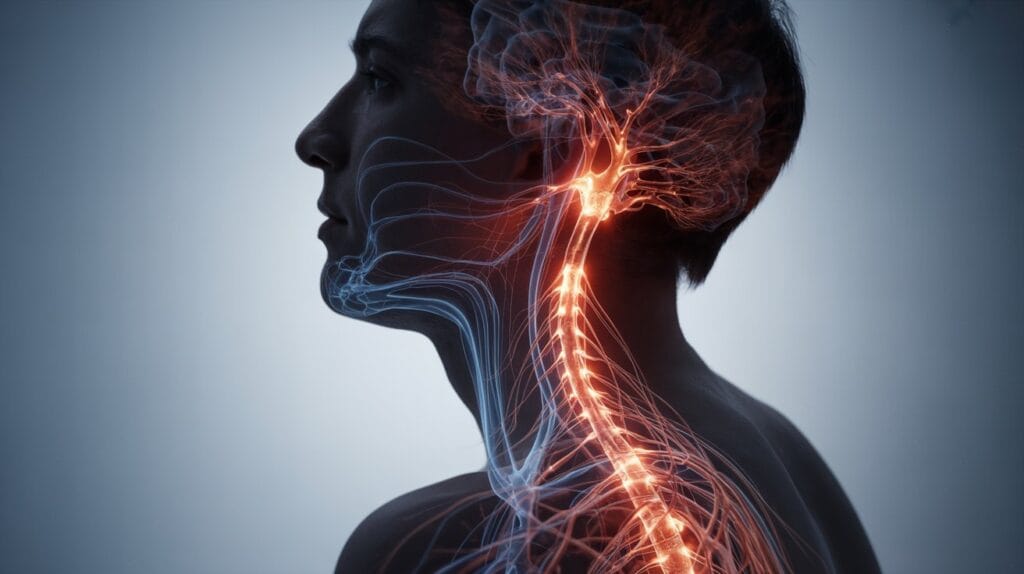Pain is your body’s alarm system. When you sprain your ankle or touch a hot stove, that sharp, immediate pain is a vital signal. It’s called acute pain, and it serves a clear purpose: to alert you to injury so you can protect yourself. But what happens when that alarm keeps ringing, long after the initial danger has passed?
This is the confusing and often maddening reality of chronic pain. It’s the guest that overstays its welcome, transforming from a helpful warning into a persistent, debilitating condition that affects every aspect of your life. As a pain management specialist, the most common question I hear from my patients is a simple but profound one: “The injury healed, so why does it still hurt?”
Understanding the crucial difference between acute and chronic pain is the first and most empowering step you can take on your journey toward finding relief.
From a Symptom to a Condition: The Great Shift
Acute pain is a symptom of tissue damage. It’s direct, its cause is usually clear, and it follows a predictable timeline of healing. As the tissues repair, the pain subsides.
Chronic pain is different. It is not just a symptom; it is a condition in itself. It is defined as pain that lasts for more than three to six months, persisting beyond the normal healing time. The transition from acute to chronic pain involves complex changes in your nervous system.
Imagine your nervous system is like a sophisticated electrical wiring system. In an acute injury, a switch is flipped, sending a pain signal to your brain. Once the injury heals, the switch turns off. With chronic pain, however, that switch gets stuck in the “ON” position.
Central Sensitization: When the Volume is Stuck on High
The primary mechanism behind this shift is a phenomenon called central sensitization.
Think of it as your body’s pain alarm system becoming hypersensitive. The nerve pathways that carry pain signals become more efficient at their job. The brain regions that process pain become enlarged and more easily activated. This creates a vicious cycle:
- Lowered Pain Threshold: Stimuli that wouldn’t normally be painful, like the touch of a bedsheet or a gentle breeze, can now be perceived as excruciating.
- Amplified Pain Response: A minor bump or ache that you might have previously ignored feels disproportionately severe.
- Pain Spreading: The pain can start to spread to other areas of your body that weren’t part of the original injury.
Your nervous system has effectively “learned” to be in a state of high alert. It is no longer just reporting on damage; it is generating the pain experience itself. This is why treatments aimed solely at the original injury site often fail for chronic pain—the problem now resides within the processing system itself.
The Brain’s Role: More Than Just a Feeling
Chronic pain also rewires our brains on an emotional level. The constant barrage of pain signals strengthens the neural pathways between the parts of your brain that process pain and the parts that control emotions like fear, anxiety, and depression.
This is why chronic pain is so often accompanied by these conditions. It’s not a sign of weakness; it is a predictable neurological consequence of a brain and body under constant duress. It affects your sleep, your energy levels, and your ability to think clearly, further fueling the pain cycle.
Reclaiming Control: The Path Forward
If your nervous system can learn to be in pain, it can also learn to be less in pain. This is the foundation of modern, integrative pain management.
Understanding that chronic pain is a condition of a sensitized nervous system—and not necessarily a sign of ongoing tissue damage—is liberating. It shifts the focus from a hopeless search for a “cure” for the original injury to a proactive strategy of calming the nervous system.
Approaches like mindfulness, graded exercise, physical therapy, anti-inflammatory nutrition, and cognitive behavioral therapy are not just “distractions.” They are evidence-based techniques designed to directly address central sensitization. They work by retraining the brain and nervous system, turning down the volume on the pain signals, and giving you back control.
This is the beginning of your journey to understanding your pain not as a life sentence, but as a condition that you can learn to manage and influence.

